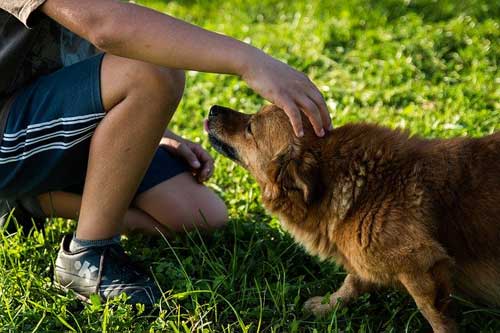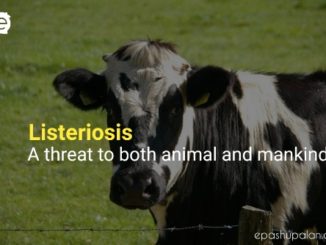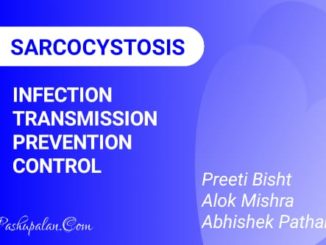World Health Organization (WHO) celebrates World Rabies Day on 28th September every year. The main goal of the celebration is to create the awareness on Rabies and to move towards the elimination of Rabies by planned way of progress in terms of vaccination and awareness. Rabies is 100% non curable and 100% preventable disease from vaccination. Rabies is the disease of all warm blooded animals including human, a disease of nervous system caused by Lyssa Virus belongs to family Rabdoviridae. Lyssa virus is bullet shaped enveloped RNA virus and extremely liable for UV light and heat. Virus is highly neurotropic and causes acute encephalitis clinically manifested by hydrophobia, maniac, and paralysis.
Epidemiology
As per WHO estimation 55,000 – 1,00,000 human rabies cases are recorded annually in Asia and African continents which means one case fatality for every 9 minutes across the region and most of the victims are children. More than 10 Million people receive post exposure prophylaxis annually in the world. Rural areas having more incidences compared to urban areas. Children of age group between 5-15 having incidence of 30-60%. 95% of human deaths occur in Asia and Africa is of Canine origin. Once symptom of disease shows than Rabies will be fatal. In human Rabies cases in India 95% are of dog origin, 3% Cat origin and 2% is from wildlife origin. In India every year 20,000 – 45,000 human Rabies deaths recorded. A total 36% world’s death from Rabies is reported from India alone and one person dies due to Rabies in India on every half an hour. Australia, New Zealand and Antarctica are free from Rabies. The disease is endemic in Asia and African continent. Though bite is major route of transmission even lick of the dog on the wound of skin can cause Rabies.
Pathogenesis
Incubation period depends on site and severity of bite wound. Rabies virus will travel 1cm/day in animal body through nerves. Early deaths are recorded in case wound is in and around head.
Dog bite—> Virus from saliva enters in epidermis—> Reaches to peripheral Nerve—> Virus goes to CNS—> Causes acute encephalitis—> Virus moves to salivary gland and secrets in saliva and enters in other animal and human body through bites—> Respiratory paralysis and death.

Clinical signs
Clinical signs in dogs observed in 2 forms
Furious form
Animal will be hyper active/ hyper sensitive, it will eat in animate objects, animal will be alert and active for sound and light it will show attacking stance, salivation and bark, reddening of eyes, attacking and biting to other animals or humans, change in behavior, running aimless, change in bark, aggressive behavior, fever, paralysis, salivation, pica, dysphasia, aggression, attacking stance, loss of appetite, weakness, sudden death. Hydrophobia and aerophobia are important clinical signs and finally death due to respiratory failure.
Dumb form/Paralytic form
Loss of sensation, drooling of saliva, tenesmus, flaccidity of tail, deviation of tail one side, change in voice and paralysis of anus. Excessive salivation, yawning and paralysis of penis observed.
Clinical signs in other animals
In Cattle: Constant and repeated bellowing, pica, attacking stance with starring look and bite observed, animal may depressed coma and followed by death.
In Sheep: Above symptoms with wool pulling observed.
In Horse: Furious form is common. Blind charging, sudden falling, rolling and chewing of skin observed.
In Swine: Twitching of nose, rapid chewing movements, excessive salivation and backward movement observed.
Clinical signs in human
99% cases of human Rabies occur due to dog bite. Incubation period ranges from 10 days to 2 years. Fever, depression, agitation, painful spasm followed by excessive salivation, hydrophobia, photophobia, nervousness, anxiety, hallucinations, paralysis, coma followed by death in a week due to respiratory paralysis.
Diagnosis
- Based on classical clinical signs like hydrophobia, maniac, change in behavior, attacking stance, excessive salivation, pica, paralysis of jaw, dysphasia.
- PCR by using brain tissue and saliva.
- Demonstration of Negri bodies in Hippocampus and Cerebellum by d RIT and FAT.
- Corneal impression and FAT for demonstration of virus.
- Habel’s mouse inoculation test.
Treatment and prophylaxis for Rabies
There is no anti-viral therapy for Rabies. Immediately after the bite of dog wash the wound with soap and plenty of water. Iodine preparations and viricidal preparations should be applied to the wounds. Then immediately contact the veterinarian n have day zero post-bite vaccination to your animal. If wound is deep penetrated by the teeth of bitten dog local immunoglobulin therapy also advised on day zero and 7th day. Tissue culture vaccine 1ml will be given in intramuscular route.
Rabies is 100% preventable disease through vaccination but once the disease symptoms are observed in dogs or in other animals than disease will be 100% fatal. Pre bite vaccination given in Dog puppy at 3 months of age with booster vaccination dosage will be given after 21 days followed by regular annual booster will be given. Cattle and other domestic animals pre bite vaccination will be given after 3 months of age followed by regular annual vaccination. In humans pre bite vaccination advised to pet owner, pet breeders, animal care takers, veterinarians, and staff working in Veterinary clinics and persons who are working in slaughter house. Pre bite follows first dose than on 7th day 2nd dose and on 21st day 3rd dose. Post bite exposure prophylaxis 0th, 3rd, 7th, 14th and 28th day. Pre bite exposure prophylaxis in human 0th, 7th and 21st day.
Control
- Avoid getting bitten by dog.
- Don’t go close to unknown dogs or dogs with change in behavior.
- Vaccinate your dog regularly.
- Animal birth control has important role in Rabies transmission.
- Awareness to public on Rabies control measures.
- No dog bites no Rabies.
- One Health Approach.
Road map for elimination of canine Rabies by 2030
Rabies control in urban region
- Strict pre exposure immunization to all dogs including stray dogs.
- Registration of Kennel club’s and breeders.
- Strict quarantine procedures for imported dogs.
- Following of strict restraining of dogs whenever they are in outdoor environment.
- Prompt attention of patient that were bitten by any dog.
- Isolation of dogs which are showing excessive salivation, hydrophobia and change in behavior.
- Health education and awareness regarding the symptoms and outcomes of Rabies with data.
- Awareness camps and extension activities to public on Rabies
- Don’t allow children to play in the ground without assistance of elders.
- Animal birth control
Rabies control in rural areas
- All dogs in the village should be annually vaccinated against Rabies.
- Awareness on Rabies in terms of transmission and control should be given in terms of leaflets and folders in local language.
- Disposal of animal carcass should be done properly.
- Stray dogs should be sterilize and vaccinated by local Panchayat bodies with expert dog catchers and local veterinarian.
- Farmers, animal keepers and butchers should be trained for Rabies symptoms, first aid in animal bite and control.
- Regular awareness programmes should be conducted in high school and colleges on Rabies.
- Villagers should know about first aid in any bites to other animals or human.
- Aggressive dogs should be restrained in the house or in the fields.
- Immediately wash the dog bite wound with soap and plenty of water. Avoid the application of soil, herbal preparations, lime and oil like preparations.
Role of Medical Officer
- Medical Hospitals should have sufficient quantities of pre and post exposure prophylaxis vaccine availability.
- Medical Officers should create awareness programmes on Rabies.
- They should work with veterinarian, NGO and local Municipal Government bodies for the elimination of Rabies under one health approach.
- They should have data on human incidence of dog bites in that area.
Role of veterinarians working in Government sector
- Veterinarian should check the population of dogs in his Dispensary or Hospital judistriction and accordingly plan for vaccination to all dogs including the stray dogs with the help of local Municipal body and NGOs.
- Veterinarian should create awareness on Rabies by giving awareness speech on Rabies in local language in High School and College students with good interaction periodically.
- Veterinarian should organize free Rabies vaccination and awareness camp in collaboration with NGOs working for animals and with various veterinary pharmaceuticals for the motto of control and eradication of canine origin Rabies.
- ALL Veterinary Dispensary and Hospitals should display the information on Rabies including cause, mode of transmission and preventive measures including first aid in local language by veterinarian is also an important aspect in creation of awareness.
- Veterinarian should guide the dog breeders and dog owners about Rabies vaccination protocol and control.
- Every veterinarian should be celebrate the world Rabies day on September 28 with activities like free Rabies vaccination camps, awareness programme and display big screen on Rabies awareness and distribution of leaflets on Rabies in local language.
- As a part of celebration of world Rabies day veterinarian can write articles about Rabies and he can give awareness talk on Rabies in TV and Radio shows as interview type programmes.
- Veterinarian should be in touch with local Municipal body for the control measures of Rabies in terms of vaccination and sterilization of stray dogs and proper disposal of carcass of animal and animal related products.
- Suspected animals sample should be sent to higher laboratories for diagnosis and detection of Rabies should be accurate and quick.
- They should write articles, awareness themes, awareness leaflets and publish in digital and social media.
Role of veterinarians working in private pet clinics/pet shops
- Private pet clinics should have Rabies pre bite and post bite vaccination facility.
- They should advice to dog breeders and owners about importance of vaccine and vaccination in control of Rabies.
- They should keep separate data of Rabies vaccine.
- They should display information and vaccination protocol of Rabies in pet clinics.
- Strict reporting of Rabies cases in dogs to Competent Authority by the pet practitioner.
- They also organize Rabies awareness and vaccination camps with NGOs for animals and State Animal Husbandry Department.
Role of local Municipal body Government
- They should make compulsory Registration and license for dog rearing and dog breeding in the limit of the city and villages.
- They should have data of stray dog population.
- Every year they should encourage pre exposure prophylaxis and sterilization in stray dogs with the help of expert dog catchers under local veterinarian guidelines.
- They should issue license to slaughter houses n proper disposal of slaughter house waste should be done to avoid pollution and stray dog feeding on it making potential threat of zoonotic disease transmission.
- Strict quarantine measures against the imported and outside dogs coming into the judistriction.
- They should support the local veterinarian in Rabies vaccination and awareness programme.
- They should have effective carcass disposal system.
Role of Non- Government/Voluntary organizations
In India lots of NGOs are working on elimination of Rabies with vaccination. NGOs should involve in organization of various programmes for Rabies in collaboration with local Government body and local veterinarian like free vaccination camps, run for Rabies awareness or run for Rabies elimination by vaccination etc.
So as a team we can eliminate canine Rabies in India by 2030 under one health approach. Team work and team effort are key to success.
References
- The Hindu Chennai 03 Oct 2015
- What is Rabies – Understanding facts and prevention: By Dr S A Rahman
- Medicine notes on Infectious diseases – By Dr Prasanna Kumar Veterinary College Bidar
- Rabies-WHO Manul
| The content of the articles are accurate and true to the best of the author’s knowledge. It is not meant to substitute for diagnosis, prognosis, treatment, prescription, or formal and individualized advice from a veterinary medical professional. Animals exhibiting signs and symptoms of distress should be seen by a veterinarian immediately |







nice information